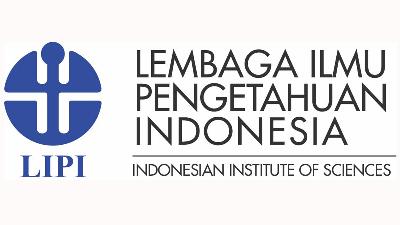Using soil ATP contents as bioindicator for paddy soil impacted by fluazinam applications
Abstract
Keywords
Full Text:
PDFReferences
Smith D.L., M.C. Garrison, J.E. Hollowell, T.G. Isleib & B.B. Shew. (2008). Evaluation of application timing and efficacy of the fungicides fluazinam and boscalid for control of Sclerotinia blight of peanut. Journal of Crop Protection 27: 823–833
Wharton P. & E. Wood. White mold of potatoes. (2013). University of Idaho Extention. 4 pages.
Shew B.B. Plant disease fact sheets: Sclerotinia blight of peanut https://projects.ncsu.edu/cals/plantpath/extension/clinic/fact_sheets/index.php?do=disease&id=3 (2011) [On line, accessed September 3rd 2017]
Maine Department of Agriculture. Late Blight—Phytophthora infestans http://www.maine.gov/dacf/php/gotpests/diseases/late-blight.htm (2005) [On line, accessed September 3rd 2017]
USEPA. Pesticide fact sheet: Fluazinam. (2001). Office of Prevention, Pesticides Protection and Toxic Substances. 20 pages.
Fishel F.M. Pesticide effects to nontarget organisms. (2017). IFAS Extension. University of Florida. 6 pages.
McBratney A., D.J. Field & A. Koch. (2014). The dimension of soil security. Geoderma 213: 203–213.
Brevik E.C. Soil health and productivity. (2009). In Soils, Plant Growth and Crop Production (Ed. W. Verheye). EOLSS Publlisher. UK. 1-26.
Laishram J., K.G. Saxena, R.K. Maikhuri & K.S. Rao. Soil health and soil quality: a review. (2012). International Journal of Ecology and Environmental Sciences 38 (1): 19–37.
Pesticide Action Network (PAN) UK. The list of lists: A catalogue of lists of pesticides identifying those associated with particularly harmful health or environmental impacts. London. United Kingdom. 27 pages. (2009)
Neumeister L. & W. Reuter. (2010). Die schwarze liste der pestizide II. Greenpeace. Hamburg. 188 pages.
Parkinson D. & E.A. Paul. Microbial biomass. (1982). In Methods of Soil Analysis 2e. Part 2: Chemical and Microbiological Properties. (Eds. A.L. Page et al). ASA Inc. & SSSA Inc. Publishers. USA. 821–830.
Ross, D.J., T.W. Speir, K.R. Tate & V.A. Orchard. Effects of sieving on estimations of microbial biomass, and carbon and nitrogen mineralization, in soil under pasture. (1985). Australian Journal of Soil Research 2(2): 319–324.
Jenkinson, D.S. & J.M. Oades. A method for measuring adenosine triphosphate in soil. (1979). Journal of Soil Biology and Biochemistry (11): 193–199.
Aviantara, D.B. The effects of fluazinam and flusulfamide on soil ATP microbial biomass. (2008). Proceeding of the International Seminar on Chemistry 2008. 269–272.
Kiss S., D. Pasca & M. Dragan-Bularda. Enzymology of Disturbed Soils. Developments in Soil Science (26). (1998). Elsevier. The Netherlands. 333 pages.
Wood K., R. Hannah & R. Moravec. Improved method for detection of ATP. (2012). Patent Application EP 2113571 B1.
Pelczar Jr. M.J., E.C.S. Chan & N.R. Krieg. Microbiology: concepts and applications. (1993). McGraw-Hill, Inc. USA. 896 pages.
Yang C., H. Chantal, V. Vladimir & Y. Gan. Fungicide: modes of action and possible impact on nontarget microorganisms. (2011). International Scholarly Research Network Ecology 2011: 1–8.
Guo H., H. Miyoshi, T. Komyoji, T. Haga & T. Fujita. Uncoupling activity of a newly developed fungicide, fluazinam [3-chloro-N-(3-chloro-2,6-dinitro-4-trifluoromethylphenyl)-5-trifluoro methyl-2-pyridinamine]. (1991). Biochimica et Biophysica Acta 1056(1): 89–92.
Brandt U., J. Schubert, P. Geck & G. Von Jago. Uncoupling activity and physicochemical properties of derivatives of fluazinam. (1992). Biochimica et Biophysica Acta 1101 (1): 41–47.
Niemi R.M., I. Heiskanen, J.H. Ahtiainen, A. Rahkonen, K. Mantykoski, L. Welling, P. Laitinen & P. Ruuttunen. Microbial toxicity and impacts on soil enzyme activities of pesticides used in potato cultivation. (2009). Journal of Applied Soil Ecology 41: 293–304.
Anon. Nebijin (Flusulfamide): Safety data sheet. (2006). Elliot Technologies Ltd. 4 pages.
Alternative Strategies and Regulatory Affairs Division-Pest Management Regulatory Agency. Fluazinam: Regulatory note. (2003). Ministry of Public Works and Government Services. Canada. 72 pages.
Refbacks
- There are currently no refbacks.

This work is licensed under a Creative Commons Attribution 3.0 License.
Supported by :


 Indexed by :
Indexed by :




